This post may contain affiliate links.
Essential tips for new gardeners, a top 10 of things you need to know, before starting a garden or setting out to grow your own food. It doesn’t matter where you’re gardening, these 10 tips for new gardeners are great for everyone. Here are our best tips for new gardeners. The most important, is probably tip 5. Look after this garden essential, and it will look after you.

- Start in one small area of your plot.
- Grow plants for free from supermarket food scraps and from seeds and cuttings from friends.
- Start with a realistic, small raised bed or number of plants.
- Don’t be scared to use non-conventional containers and beds.
- Your soil is the most important factor in successful garden growth, nurture it.
- Don’t be afraid to experiment
- Check your plants at least daily.
- Only grow food crops you’ll eat.
- Grow multiple plants of each type.
- Don’t be scared to fail, there’s no such thing as a black thumb.
For more information on all these basic new gardener tips, keep reading!
Start in One Small Area

Do you have a big empty garden or backyard that you want to turn into a beautiful, productive haven filled with fruit, vegetables, birds, and butterflies? So don’t go to the home store and nursery, buy ten plants and space them out all over your plot.
Don’t have a banana plant on the back fence, a tomato on the side fence, a lemon out front and a few herbs in a pot. Group plants together. That way you only have one area to water and fertilise. Plants do compete for sun, water, and nutrients, that’s true. Just allow them all a little space and room to grow, let them all access plenty of sunshine, and they will support each other, enriching that area of the soil faster.
Water them deep and fertilise them well. Before planting dig in some homemade compost or bought well-rotted manure. Add a little more as a top-dressing now and again. If you have eggs available from your chickens (we always have too many eggs!) burying an egg or two deep in your soil can be an amazing fertility boost.
Mulch your bare soil to keep in moisture, provide shade and encourage tiny organisms. Your small area will flourish better than a huge empty space dotted with lonely plants. You’ll also be saving yourself a ton of work.
Another very important concept, popular in permaculture gardening, is to start near your back door. Keep herbs, small fruits and culinary leaves near to your quickest kitchen access. You’re far more likely to use them, and look after them. A large pot of mixed herbs on a terrace or patio can be a very good starting point.
Bonus tip: Find out about companion planting. Some plants like to grow near other plants, like tomatoes with marigolds. Don’t forget to grow flowers to attract pollinators.
Try Growing New Plants from Supermarket Food

This is a free way to grow food and it works so well! You may have read elsewhere that store-bought food is treated with growth inhibitors to keep it looking perfect longer and prevent us from doing this very thing. No supermarket wants to lose its business, does it?
Well, I’ve grown endless food plants from store-bought, maybe it’s treated, maybe it’s not, but it mostly worked. You can grow from pips or seeds (for example peppers, pumpkins, chillies and tomatoes) or from cuttings (water spinach) or roots (sweet potato, ginger). Pineapples can be grown from tops. Try it.
There’s never anything to be gained by not trying. I’ve had huge successes this way and it doesn’t cost you a cent. It’s also fun to try! The list below is food plants I’ve successfully grown from store-bought foods.
- celery rooted in water for celery leaf
- sweet peppers (capsicum) from seed
- hot peppers (chillies) from seed
- water spinach (kang kung) from stem and leaf cuttings
- sweet potatoes
- ginger
- galangal
- papaya
- tomatoes (from seeds)
- pumpkins from seeds
- pineapples
- spring onions (from bases of bought onions, chopped off)
Also ask around, gather seeds and cuttings from friends and fellow gardeners. Gardening and growing food does not have to be and should not be, expensive.
Don’t Go Crazy, Start Small
I’m seeing a lot of new gardeners currently, going right ahead and installing a dozen raised beds, a greenhouse, all sorts, in one go. Don’t do this, you will become overwhelmed. If you’ve never been a gardener before start small.
Get a feel for the amount of work involved and discover if you actually enjoy gardening or not before you spend a fortune or build something beyond your limits. If you’re going the raised bed route, start with one. Gradually add more as your confidence and capabilities grow.
If you have good soil, grow in the ground. Raised beds are expensive and often totally unnecessary.
There is nothing sadder than neglected garden beds belonging to a gardener who lost interest. If you’re growing in pots, on a balcony or small space, you’ll probably be OK starting loads of pots at once, the effort will be so much less and one pot will give you little return.
You Can Grow Plants in Almost Anything
Don’t feel that you have to hit up the home store buying special pots and trays. You can grow plants in just about anything that will hold soil. This includes egg boxes for seed starting, old sinks, milk bottles with the tops cut off, plastic food containers, anything food-safe.
Avoid old car tyres, these are reputedly full of toxins that will get into your food, and into you. These should be fine if you only plan to grow decorative plants and flowers on them, or near them.
Bonus Tip : Plants grow best, usually, from seeds or cuttings. Buying plant starts at the home store can result in stunted plants, unseasonal plantings, wasted money, and failure. Certain plants, for instance, peas and beans, really don’t like being transplanted. Sow the seed instead, it’s cheaper and can be quicker.
Success in Gardening is All About Your Soil
Gardening is all about soil and some soils, are just useless. I grew up in a home with a huge garden full of rich black soil. and thought that was normal. Believing all soil would grow plants well. That was until I moved to our current house, in the tropics, and tried to plant seeds.
I was in for a shock. Hard-baked clay which became mush in the wet summers and was devoid of organic matter was the reality. It was unusable. I had to grow in bought soil or compost for years.
Over time I’ve improved the soil and some parts of the garden now have decent soil, into which I can grow directly so long as I keep fertilising, keep mulching, keep watering.
Probably the best thing you can do to improve it is to use it. All those roots create channels, watering keeps it moist, mulch allows tiny creatures to move in. The more you use and amend, the better it gets. If you have poor soil, you’re probably best off building (or buying) raised beds or growing in pots. Our raised beds are open to the earth below and that soil is pretty good now.
Another thing to watch out for in your soil are contaminants like lead or arsenic. If you’re in a city, someplace where fuel was spilt, or your beds are near a fence or old lead-painted structure, this is something to think about. You can get your soil tested, look here for a map and testing service. If you have contaminated soil choose closed-bottomed pots, beds, and containers.
If you don’t have soil worries, feed it. You will need to add nutrients because your plants use up nutrients. Make your own compost, set up a worm farm, buy well-aged manure. Feed your soil to feed your plants. Also don’t walk on your beds, compacted soil doesn’t make happy plants either.
There is No Right Way and Wrong Way
Don’t feel you have to slavishly follow a set of planting rules. There is no such thing as an exact best way to grow any plant. Our conditions and climates are always slightly different.
Just try, give it a go. If you have success, or failure, you will learn from that and become a better gardener.
Check Your Plants Daily
Once you have seeds or seedlings in the ground, a lot of us become obsessive plant watchers. We’re out in a gardens at dawn, daily, coffee in hand, checking on our new babies.
This is a great time to check for pests and for monitor for soil moisture or and shortage of nutrients. If you spot a caterpillar or grasshopper, pinching it off now could prevent a major disaster in your garden.
Stick your finger into the soil to see if it’s moist. If it’s dry, water it deep. If it’s wet, don’t.
Only Grow Things You Enjoy
Why grow okra if you never eat it? I grew radishes one year, nobody touched them. Just because a food plant, be it fruit, or vegetable, grows well in your area. and other people grow it, doesn’t mean you should.
Think about your staples, the foods you eat every day and that your body needs. Put your biggest effort into growing those. My list of garden staple food plants would include:
- Salad leaves, including rocket (arugula)
- Herbs, particularly basil, curry leaf, rosemary, and dill.
- Tomatoes
- Eggplant (aubergine) because they’re so easy to grow and give a large volume of food.
- Lemons, and ideally, grapefruit too. We use lemons daily.
- Any green leafy veg, we find kale works best, many varieties.
- Sweet potato, for a carb-rich staple, and for edible greens.
- Passionfruit
- A mulberry tree, for fruit, shade, edible leaves, and wood. Mulberry leaves have health benefits! Multi-use plants like this are gold.
These are just our favourites, the things we eat all the time. We also grow mountains of papayas and bananas. A lot of our excess (my kids don’t like papaya and bananas come in the hundreds) can go to your chickens to be turned into eggs, meat, and more fertiliser.
You’ll Need More Than One Plant

Too many people buy one little plant expecting it to feed them. Particularly herbs, you need a large well-established plant to harvest from it regularly. Get several instead, you’ll never get a harvest to feed a family from a single plant, with a few exceptions. Cabbages are a single high food volume plant. It’s a good idea to stagger your seed sowing too, so that you have succession in your harvesting, rather than all of your produce ready on one day.
Bonus tip: If you have one tomato plant and want ten, make new plants from cuttings. Most people take out the side shoots on tomatoes, you can root these in water or even very wet soil to make new plants, faster. Many plants can be propagated from cuttings but tomatoes work particularly well.
Don’t Be Intimidated and Don’t Think You Can’t

More gardening tips from our site!
There is no such thing as a black thumb and green-fingered friends weren’t born that way. As with most things in life, if you want to do something, if you stay interested and continue to learn, you’ll get good at it. That would be my most essential tip for new gardeners, just try, don’t be afraid to fail. Gardens normally fail through neglect and neglect comes through disinterest, not lack of know-how. Check your garden every day, make observations, see what works and what doesn’t and if in doubt tap into other gardeners’ know-how. Never follow rules slavishly, don’t take somebody’s word as gospel, and be prepared for setbacks. Just have a go. Gardening is so rewarding, not just in food but in relaxation, beauty and being in the moment. You’re also giving back to our planet in so many ways. Just try. Plant something today.
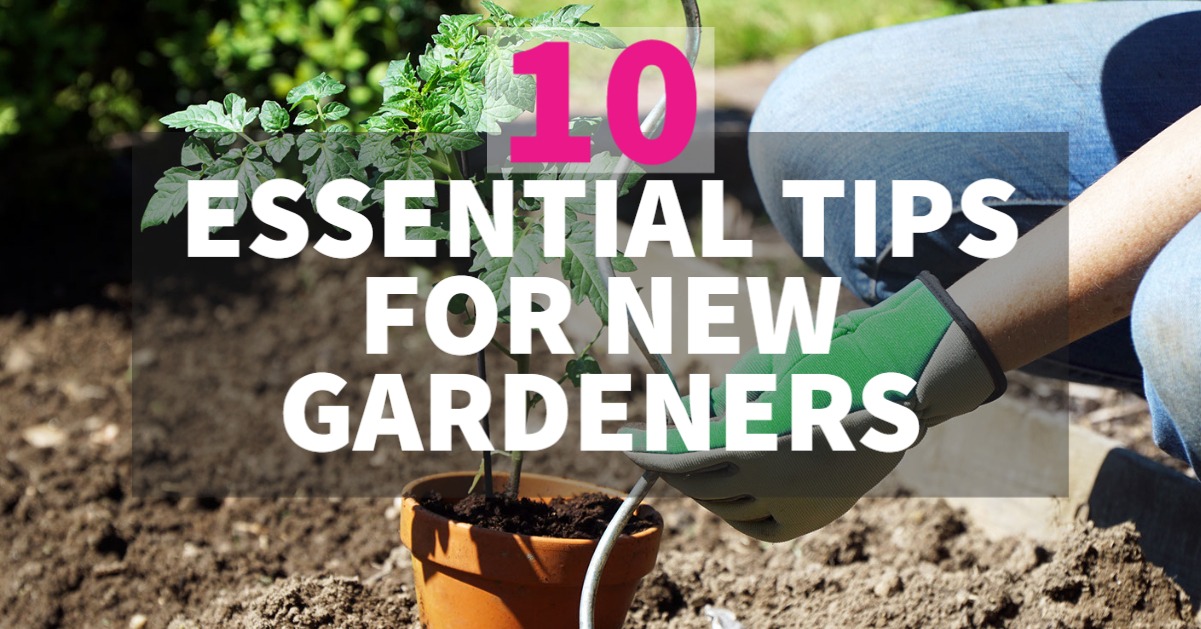
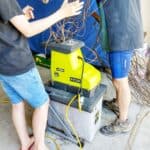
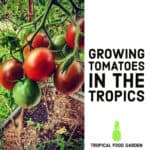


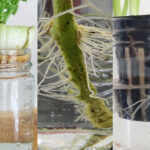
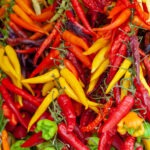
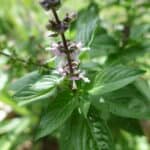
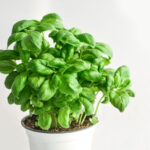
I love flowers, They smell so good in the summer time